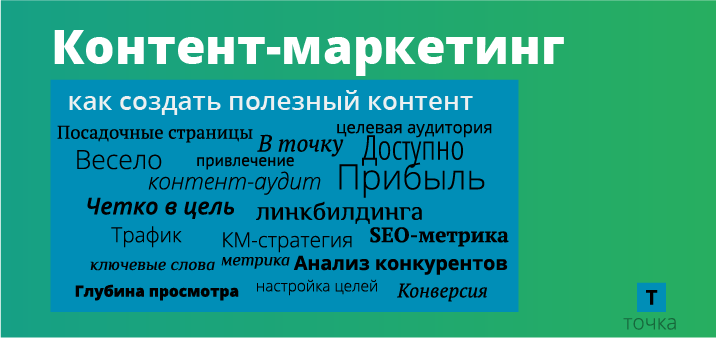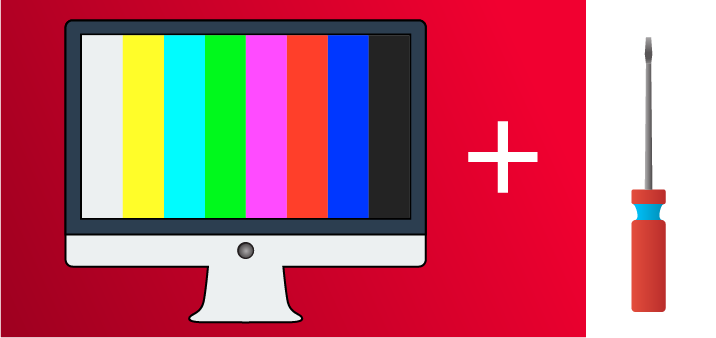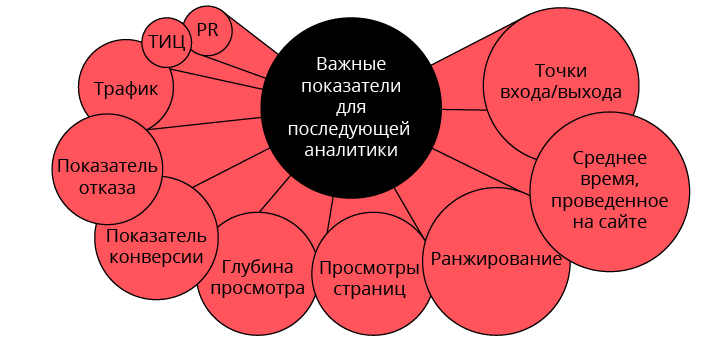Content Marketing: How to Create Useful Content

If you are a lover of practice, not theory, if you prefer not only to absorb, but also to implement the acquired knowledge into your workflow, then everything that you will read below will be a very useful tool for application.
Over the past couple of years, content marketing (hereinafter referred to as CM) has gained considerable popularity, and now it is no longer enough to stock up on a couple of links and unique articles. Today, KM is a whole strategy, a “new link building”, so to speak.
Such important content!
If you are against comparing KM and link building, let's clarify that in this case, we mean short-term methods of obtaining incoming links. In the future, most of this link mass should develop into a long-term CM. If there is a strategy, then it will be much easier to implement the plan.
Strategy Development
Research, research and more research. They are your allies for the next couple of months. Think it's too long to prepare a campaign? Well, then you probably won't be able to do anything. Here, after all, what is most important: not fun or accessible, but hitting the target.
Read below about the main thing in the KM strategy
View from the outside
Before you start collecting data, get to know the company itself.
Analyze the business model
- How does the company make a profit?
- The most profitable products (services)? What is their appeal: real benefit, just cool branding, or maybe seasonality?
- What metrics does the sales department use to evaluate KPIs, and what is the structure of the department itself?
Assess your customer base
- Who are the clients?
- What attracts them?
- Are there customer surveys? Perhaps there is market research.
Gather more information. In this case, there won't be much.
Current content processes
- Does the content go through the editor? On what basis is he approved?
- Who is a content strategist?
- What is the type of content being generated today?
- How does content and brand interact?
Detailed analysis of initial data
Once again, we will make a reservation that at this stage of acquaintance with the company it is necessary to collect as much information as possible. And from all this mass it is necessary to leave only the relevant one. So get together and focus!
Competitor analysis
- Analyze the content used by competitors. What is he?
- Why does the audience appreciate this content? If competitors lose in WC, find the reasons for the loss. No need to step on the same rake as other market players.
- Analyze key SEO metrics.
Keywords analysis
- Keywords are one of the main sources of traffic to a website. What is this traffic?
- Compare with those keywords for which the landing pages of your resource are sharpened.
- What role do key phrases play in content creation in this case?
Explore the Market
What is the essence of business - b2b, b2c? This will give an idea of what the list of questions will be. For the b2b sphere, the classic questionnaire is as follows:
- Demographic questions, questions about the field of activity, age, position, etc.
- How long has a person been a client of the company? Will he be able to recommend the product (service) of the company to others?
- Well no. Why?
- Questions about some specific products (services).
If the direction of the company's activity is b2c, then the questions are focused on demography, education, marital status and life, etc. Questions that are not relevant for the b2b direction are also involved:
- The frequency of product purchases.
- Why is this particular product preferred?
- How much priority is the purchase of this product over similar ones?
There are even services that provide free questionnaire templates that you can customize without violating the structure and logic of communication. And there are a lot of them on the Internet.
Interview clients
Ideally, this, of course, is a personal communication with a client or a telephone interview. Here it is important to improvise, direct the conversation in the direction you need and get the most detailed answers, creating personas along the way.
Interview questions should be as detailed as possible: ask about daily tasks, likes and hobbies, frustrations and worries, wants and needs, and, of course, how it all contributes to the buying process.
Interestingly, there are several behaviors that play an important role in the process of compiling personas:
- Enterprising . He is “ahead of the rest!”, is “in the know”, always takes the initiative in researching something new and unknown.
- Opinion leader . They listen to him, he can influence the opinions of others.
- Decision maker . Determined, knows what he wants and why.
- Buyer . A person who cares about the shopping process itself.
- User . A person who emphasizes the use or disposal of a product or service.
- "Keymaker" . He has two roles: the one who makes the decision and the one who is listened to - the leader of opinions. He resolutely opens the door himself or just as resolutely directs others there.
Do not lose these images, they will come in handy very soon.
Preparation process: setting metrics and goals
And now a lot of data has been collected, you can see the main goals, and in some places intermediate results are already visible. Now, from the whole heap of information, you need to cook up something specific.
The task at this stage is to determine which content is in which of the sales funnels. After the content is grouped, you will see the distribution methods and the target audience of each unit. In addition, gaps will come out. If you stick to the planned strategy, then it will not be difficult to eliminate them.

Checkpoint for follow-up analytics
Before launching a KM campaign, it is necessary to fix the indicators. Having received the data after a certain time after the launch, you will already have something to compare with and it will become clear which content works and which remains unattended.
Important indicators
- Traffic
- View Depth
- Direct page views
- TIC and PR
- Entry points/exit points
- Average time a user spent on the site
- Conversion and bounce rates
- Ranging

Checking Existing Content
Here you will need to audit the currently existing content. See how it "worked" before, how it can be improved. You will need:
- Web analytics and SEO analytics. Namely: the level of involvement, views, TIC and PR.
- Content analysis: what kind of content "works"? how useful is it? For what purpose is it?
To answer all these questions, you will need to break down existing content into these groups:
- Creating an information field . This content is for those who still do not know about the product (service) of the company. It is necessary to tell about yourself, to interest.
- Attracting users . For those who are already familiar with the offer. Such users need to show what makes you so good.
- Giving what is sought . The user is looking for what your company can offer him. Make sure all roads lead to you.
- Helping to make a decision . Here he is, the user, already "warm" and almost ready to buy. Help him make a decision. Show that he needs you.
- Stimulating purchase . Interested in you, but is it worth making a purchase decision now? Convince the user to buy what you offer. Justify the importance of your proposal.
- Increasing loyalty . For those who already know you and are friends with you. It's time to fall in love with yourself.
I would like to note once again that the main goal of a content audit is to balance the supply of content to the site. Thus satisfy the information needs of users. By analyzing the content, you can identify flaws and work through them, filling them with new and high-quality content.
CM Goals and Metrics
To entice and entertain, to push to make a decision, to work on increasing the conversion rate, to work on brand development - this is a competent content strategy.
The objectives of the CM are
- Optimization of conversion rates.
- Increase organic traffic.
- Increasing audience loyalty and engagement.
- Improving brand awareness.
Next, we move on to the sales funnel. Content should have clear goals with metrics and link to certain stages in the sales funnel:
- Traffic . What is the income of content from views or downloads.
- Sharing . how often the content is liked, reposted, etc.
- Lead generation . How many visitors moved into the category of leads.
- Sales . And, of course, how many visitors became buyers.
Persona development
Each and developed persona is one of your potential clients. It's a mix of survey results, surveys, content audits, and phone interviews. In general, the result of all the work that has been done previously. The deeper each person is worked out, the more accurate the portrait will be.
Content should be made for a specific person. Only then it will be high-quality, result-bearing content.
Required competent editorial
At the end of the preparatory process, it is necessary to identify curators and performers, people who will be responsible for generating content. And also clearly identify the chain of interaction: from the place of birth to the final implementation.
It is important to remember that even having marked the entire chain, you are not immune from the fact that something may not go according to plan. Keep a link in reserve, in case of an unplanned loss of one of the active ones.
If everything is ready, let's move on to the most interesting
- Consider a certain style of presenting information on your site.
- What will be the content strategy: what kind of content will it be, at what stage of the sales funnel will it be located, the type of navigation on the site, etc.
- Work on the semantic core. Under what requests the content will be “sharpened”.
If you can clearly answer all these questions, then how the content will be created, and how all links in the chain should interact with each other, will become clear.
Clear answers to questions also give an understanding of what the resource can do.
Intelligence service
At this stage, we determine the key players in the market, competitors and those who are opinion leaders. It is also important to analyze content projects from other areas.
The content is such a thing that even after analyzing where, it would seem, you won’t learn anything useful for your field, it turns out that there are a lot of ideas for something new. Therefore, you should not limit yourself to your area.
But don't forget to research your audience. There are many services that help you get closer to your customers and subscribers. For example:
- Followerwonk . Tells you the best time to post on Twitter.
- Google Alerts, Twitter, RSS . Here's what will help you keep up with the news in your industry.
And competitors deserve special attention. Don't forget about it!
Content Creation
Here it is - the crucial moment. The main thing here is not to miss anything important, because there is so much information collected. Go through the collected information again, do not miss anything important:
- How reliable is the collected data?
- The level of informativeness and usefulness of the content?
- Is it easy to understand?
- Does it stand out from competitors' content?
And finally, distribution
Once published, make sure to use as many marketing channels as possible. Promote it not only through newsletters, social networks and partner networks, but also within the company. In this case, the opinion of colleagues is important along with the opinion of users.
Efficiency Evaluation: Final Checklist
After the article has circulated, let's collect the first data:
- The reaction of users to each of the published materials.
- Have conclusions been drawn? Were there any problems during the preparation? Perhaps there is already a solution how to improve existing results?
- What is the reaction of the audience? Is there a return, and if so, at what stage of the sales funnel?
Here is what I would like to say in the end: do not stop at what you have received, change. Add headings, reshape letters for mailing, come up with new headings. Most importantly, do not let yourself and your readers get bored!

